

Dubrovnik
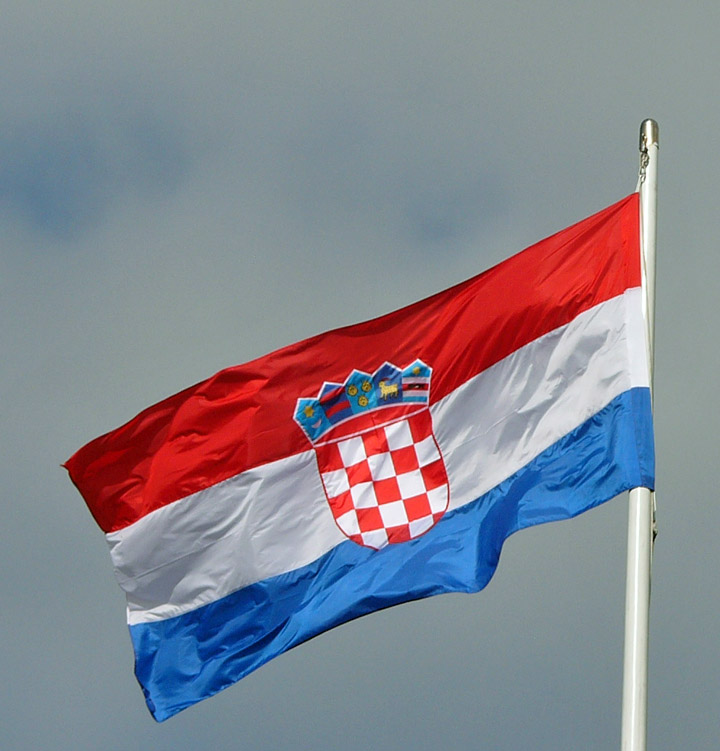
flag of Croatia
Dubrovnik was founded by joining two small towns: Laus, a town on a small island off the southern Dalmatian coast, which provided shelter for the Italic refugees from the nearby city of today's Cavtat; and Dubrava, a settlement of Slavic immigrants at the foot of the forested Srđ hill.
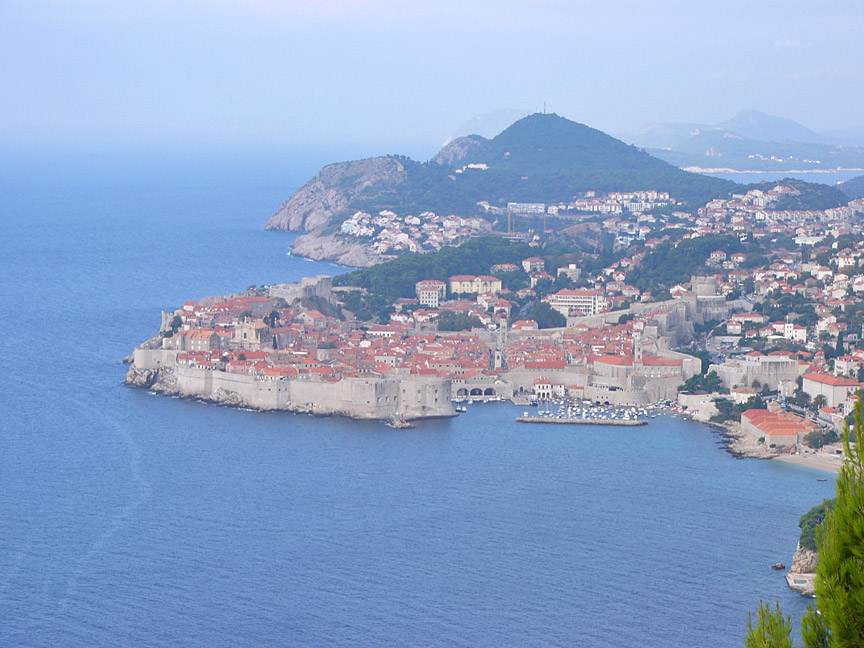
The strip of wetland between the two parts of the town, was reclaimed in the
12th century, unifying the city around the newly-made plaza (today Placa or
Stradun). The plaza was paved in 1468 and reconstructed after the earthquake of
1667. The city was fortified and two harbors were built on each side of the
isthmus.
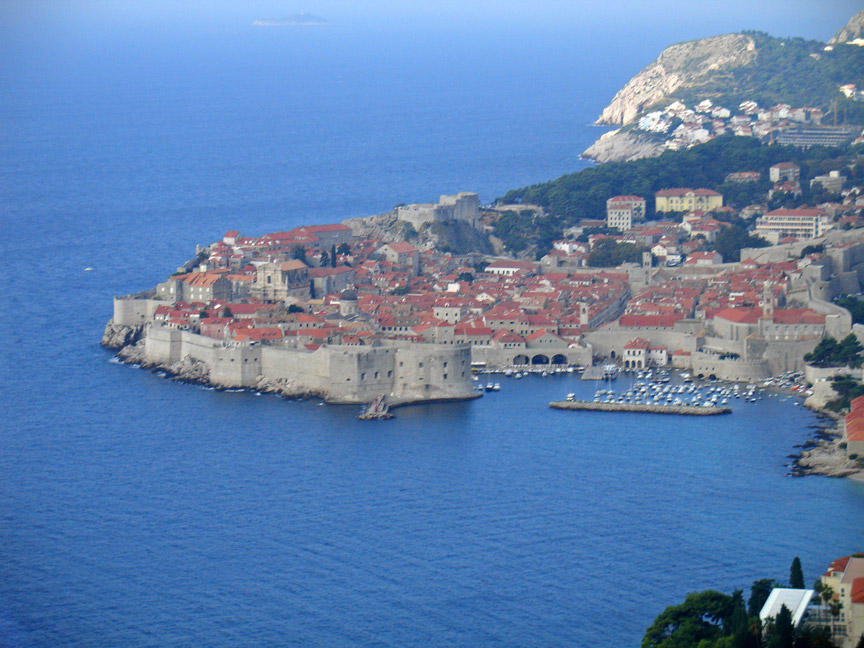
From its establishment in the 7th century, the town was under the protection of
the Byzantine Empire. After the Crusades, Ragusa/Dubrovnik came under the
sovereignty of Venice (1205–1358), and by the Peace Treaty of Zadar in 1358 it
became part of the Hungarian–Croatian Kingdom.
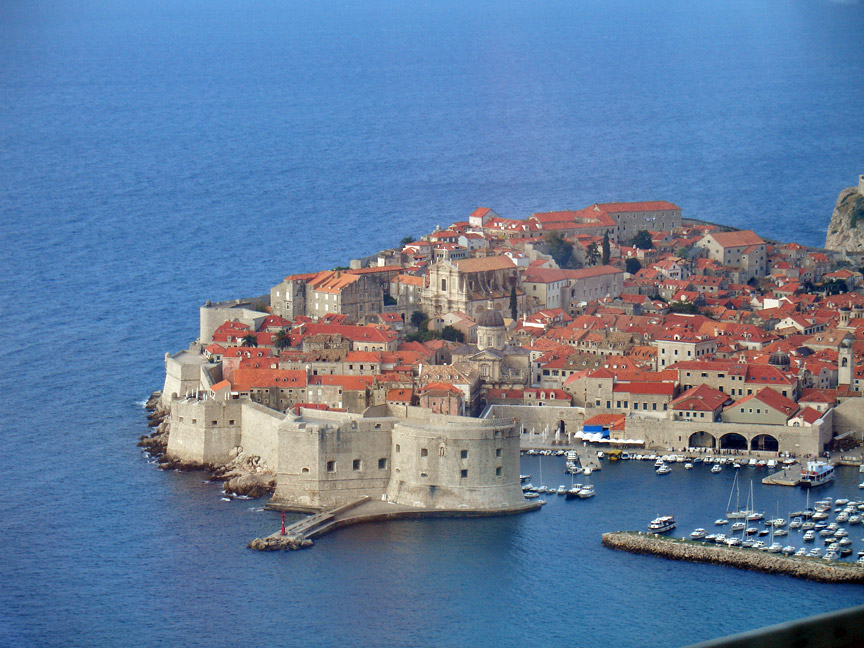
Between the 14th century and 1808 Dubrovnik ruled itself as a free state named
Respublica Ragusina, the Republic of Ragusa also known as the Republic of
Dubrovnik. The Republic of Ragusa reached its peak in the 15th and 16th
centuries, when the Dubrovnik thalassocracy rivaled the Republic of Venice and
other Italian maritime republics. During this time in Dubrovnik worked one of
the most famous cannon and bell founder of this time: Ivan Rabljanin (Magister
Johannes Baptista Arbensis de la Tolle).
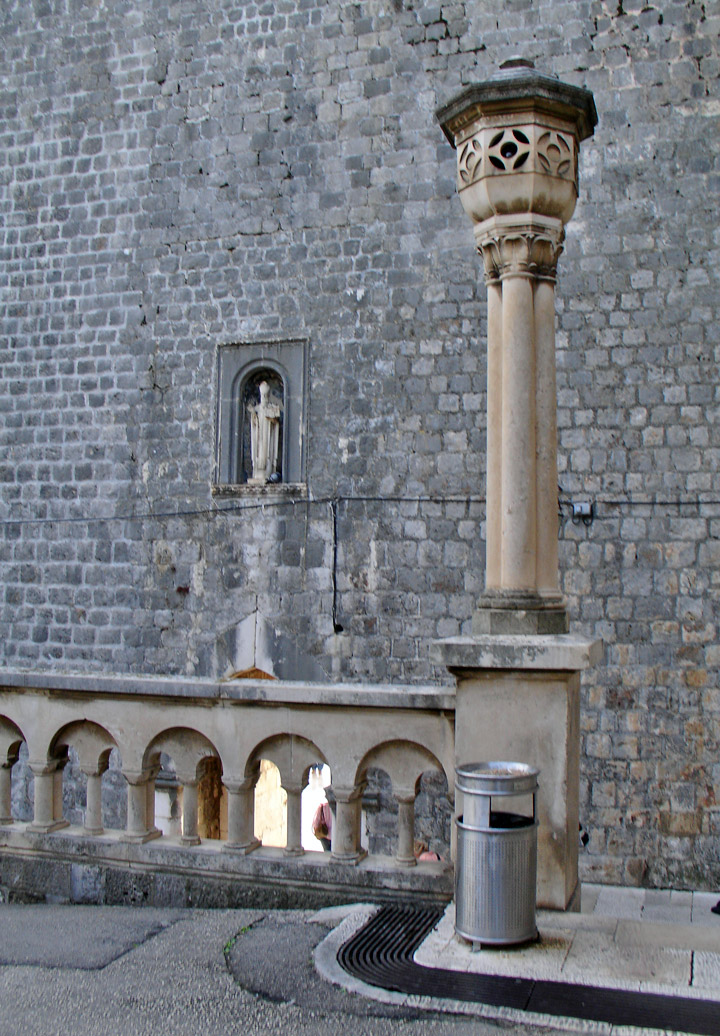
at the Pile gate
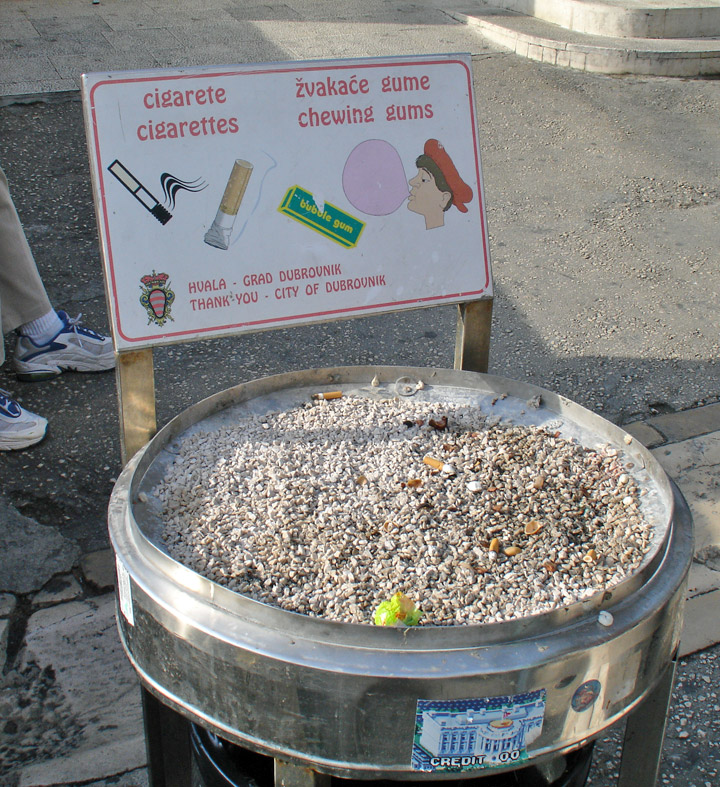
enter the city, but not with cigarettes or chewing gum
Many Conversos (Marranos) were attracted to Dubrovnik, formerly a considerable seaport. In May, 1544, a ship landed there filled exclusively with Portuguese refugees, as Balthasar de Faria reported to King John.

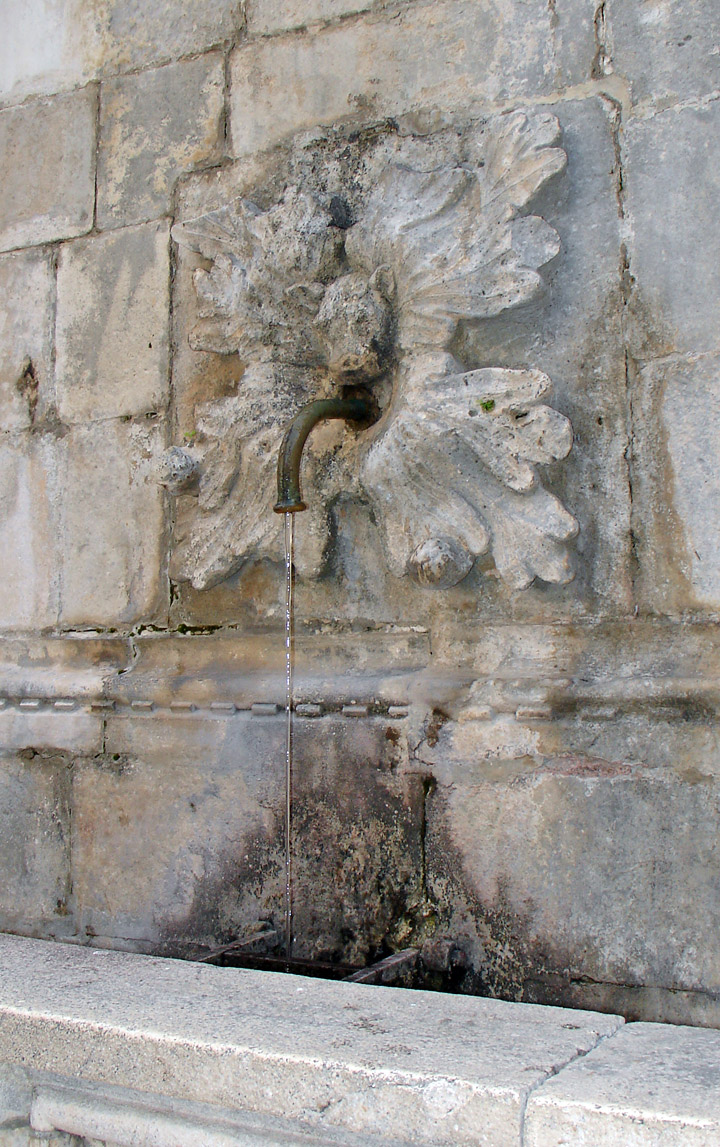
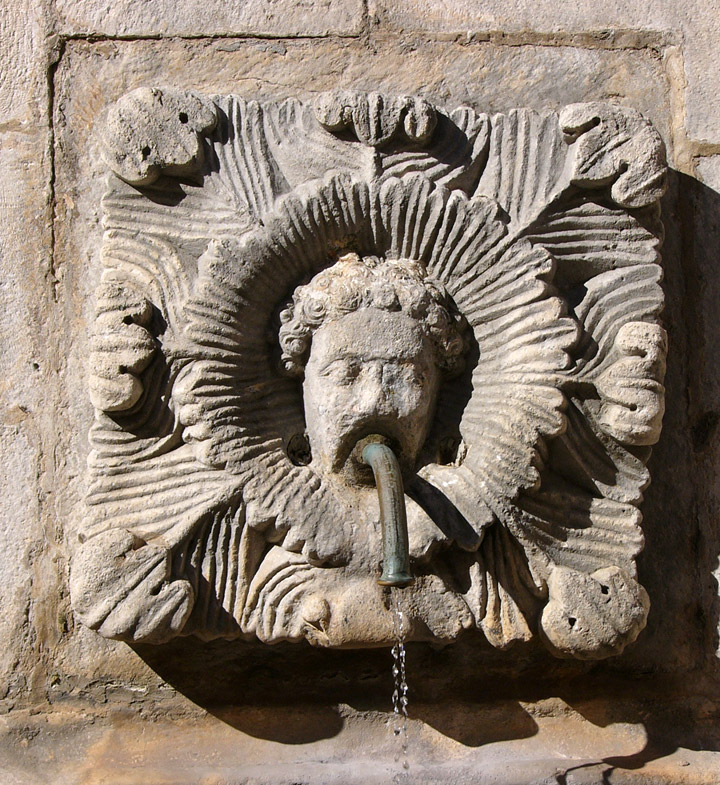
at Onofrio's Large fountain
The city was ruled by aristocracy that formed two city Councils (Vijeće). They maintained a strict system of social classes, but they also abolished slave trade early in the 15th century and valued liberty highly. The city successfully balanced its sovereignty between the interests of Venice and the Ottoman Empire for centuries.
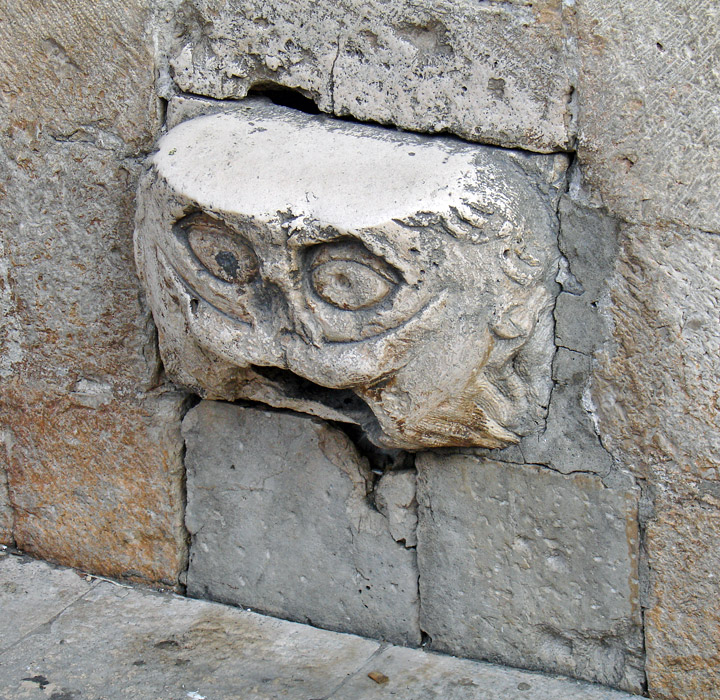
The Republic gradually declined after a crisis of Mediterranean shipping — and
especially a catastrophic earthquake in 1667. In 1699 it was forced to sell two
patches of its territory to the Ottomans in order to protect itself from the
advancing Venetian forces.

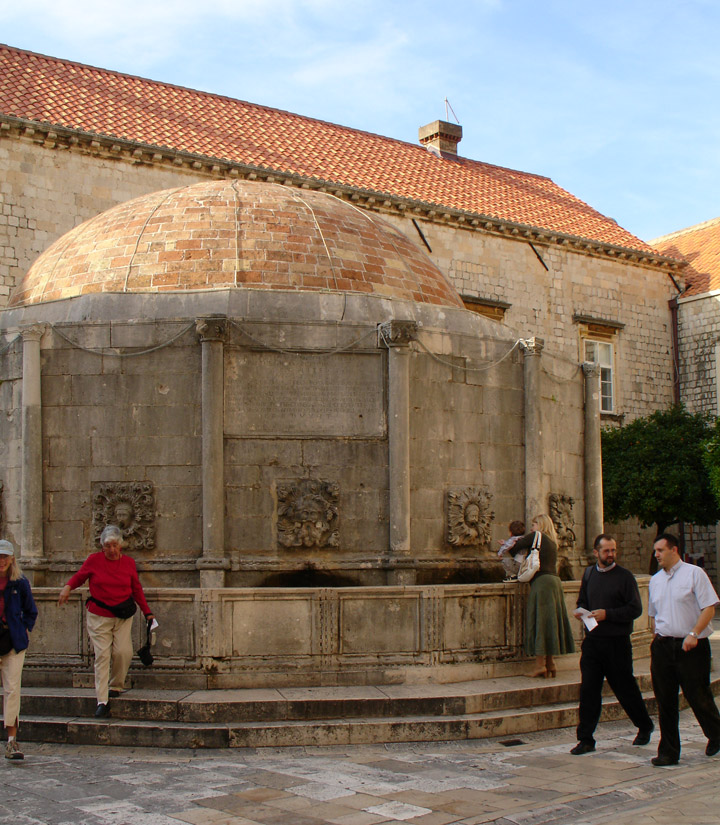
Onofrio's Large Fountain
Its final demise was caused not by Venice, but by Napoleon's forces, which conquered first the Venetian territories and then the Dubrovnik republic in 1806. At first Napoleon demanded only free passage for his troops, promising not to occupy the territory and stressing that the French were friends of the Ragusians. Later, however, French forces blockaded Dubrovnik's harbors, forcing the government to give in and let French troops enter the city. On this day, all flags and coats of arms above the city walls were painted black as a sign of grief. In 1808, Marshal Marmont abolished the republic and integrated its territory into the Illyrian provinces.
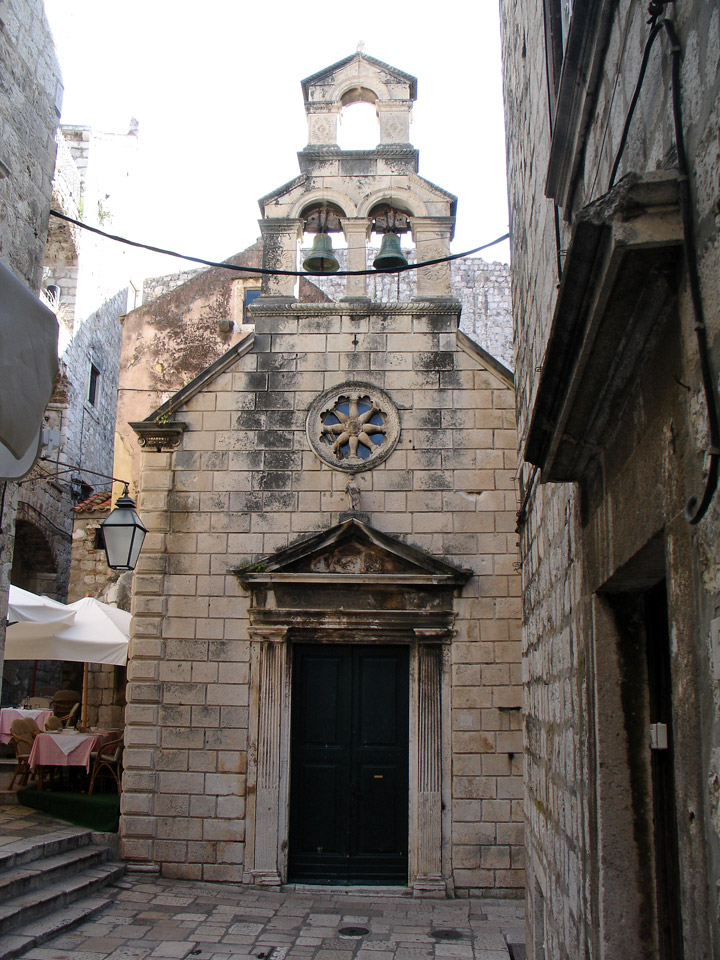
In 1815, by the resolution of Congress of Vienna, Dubrovnik was annexed to the
Austrian Empire (from 1867 Austria-Hungary), and remained in the crown land of
the Kingdom of Dalmatia until 1918. In 1815 the former Ragusan Government, i.e.
its noble assembly, met for the last time in the ljetnikovac in Mokosica. Once
again heavy efforts were undertaken to reestablish the Republic however this
time it was all in vain. After the fall of the Republic most of the aristocracy
died out and emigrated overseas. One of the last surviving families is the Gozze
family.
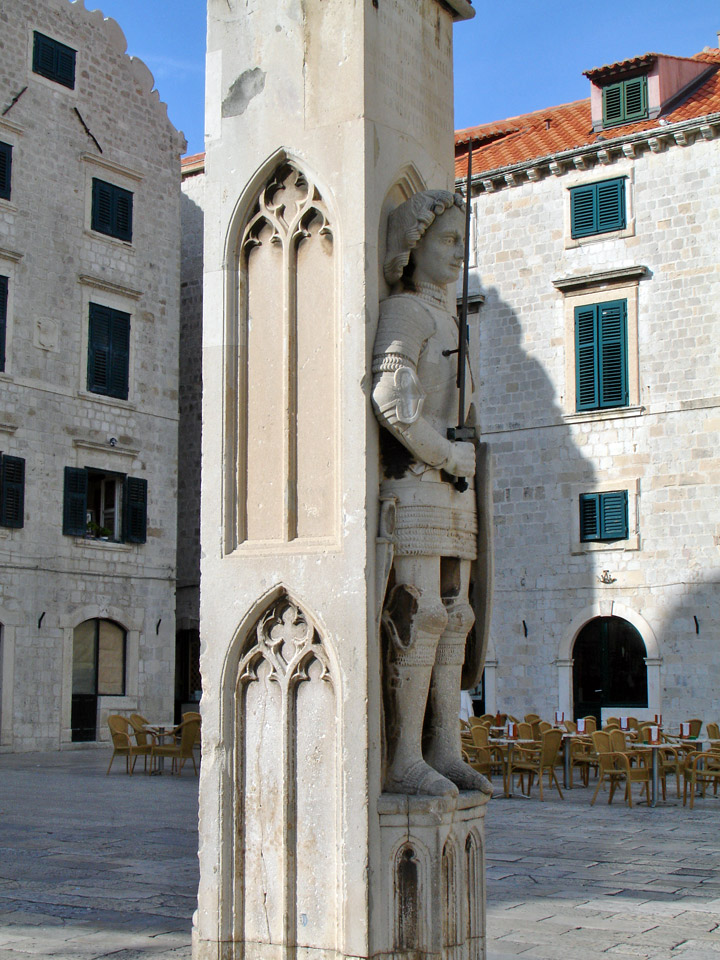
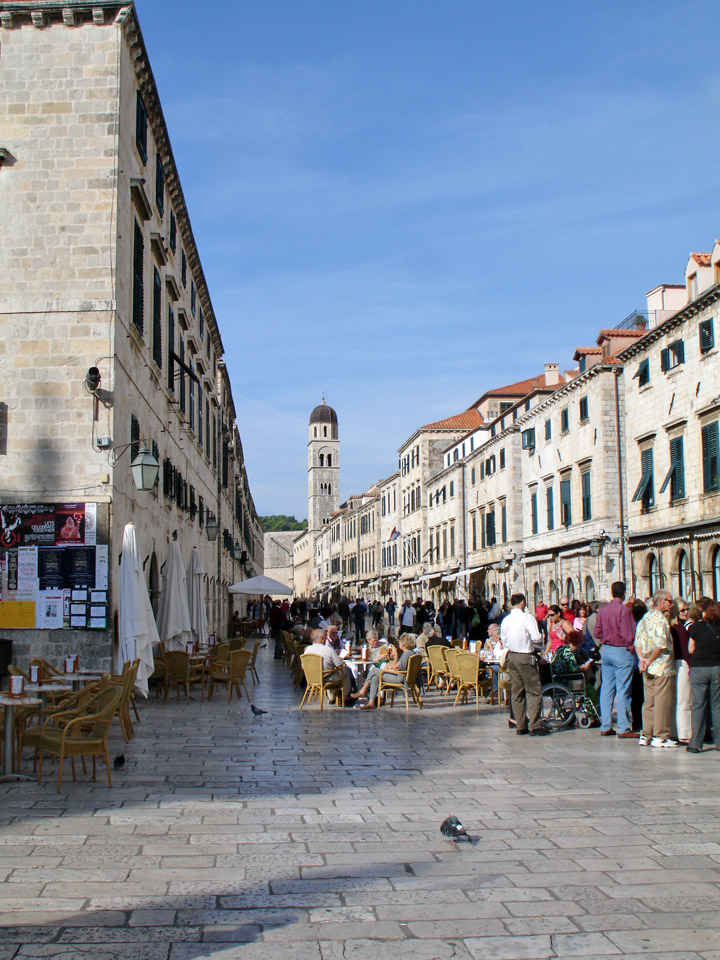
In 1848, the Croatian Assembly (Sabor) published the People's Requests in which
they requested among other things the abolition of serfdom and the unification
of Dalmatia and Croatia. The Dubrovnik Municipality was the most outspoken of
all the Dalmatian communes in its support for unification with Croatia. A letter
was sent from Dubrovnik to Zagreb with pledges to work for this idea. In 1849,
Dubrovnik continued to lead the Dalmatian cities in the struggle for
unification. A large-scale campaign was launched in the Dubrovnik paper
L'Avvenire (The Future) based on a clearly formulated programme: the federal
system for the Habsburg territories, the inclusion of Dalmatia into Croatia and
the Slavic brotherhood.
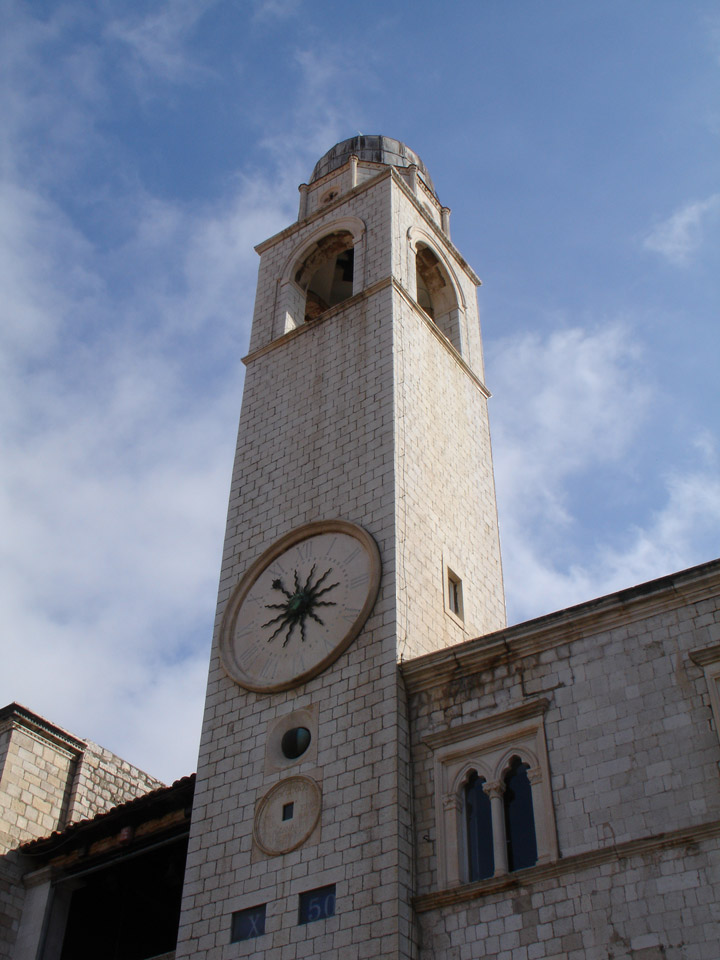
Sponza Palace
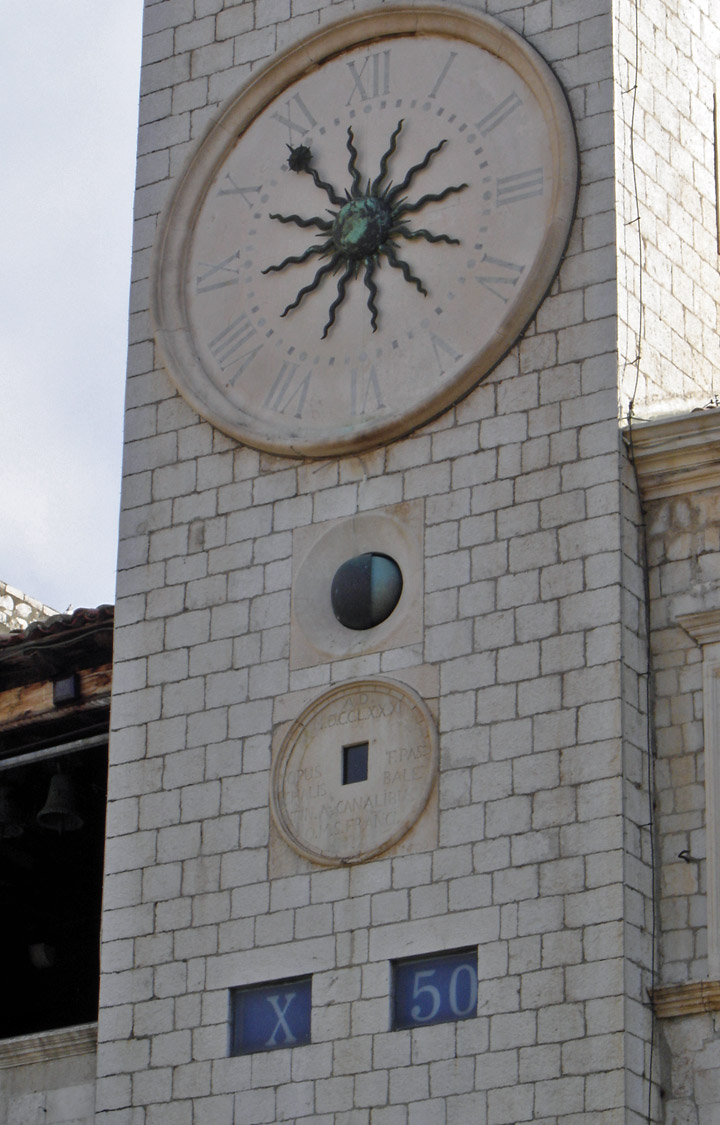
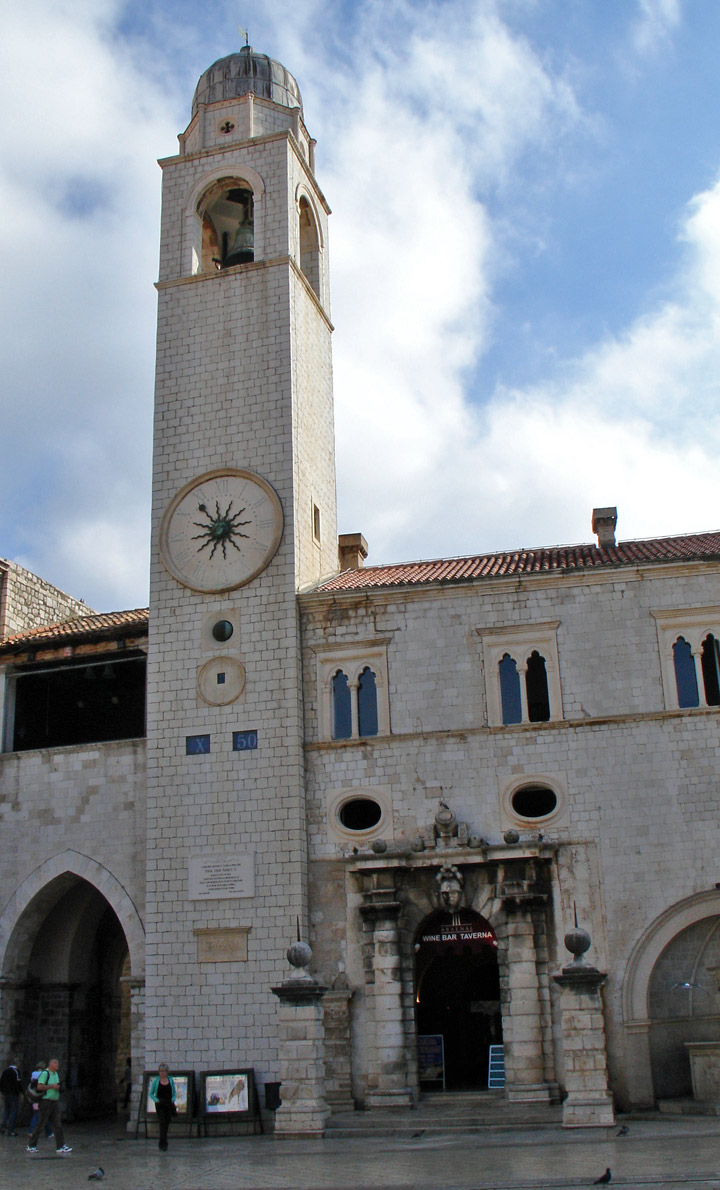
In the same year, the first issue of the Dubrovnik almanac appeared, Flower of
the National Literature (Dubrovnik, cvijet narodnog knjizevstva), in which Petar
Preradovic published his noted poem "To Dubrovnik". This and other literary and
journalistic texts, which continued to be published, contributed to the
awakening of the national consciousness reflected in efforts to introduce the
Croatian language into schools and offices, and to promote Croatian books. The
Emperor Franz Joseph brought the so-called Imposed Constitution which prohibited
the unification of Dalmatia and Croatia and also any further political activity
with this end in view. The political struggle of Dubrovnik to be united with
Croatia, which was intense throughout 1848 and 1849, did not succeed at that
time.
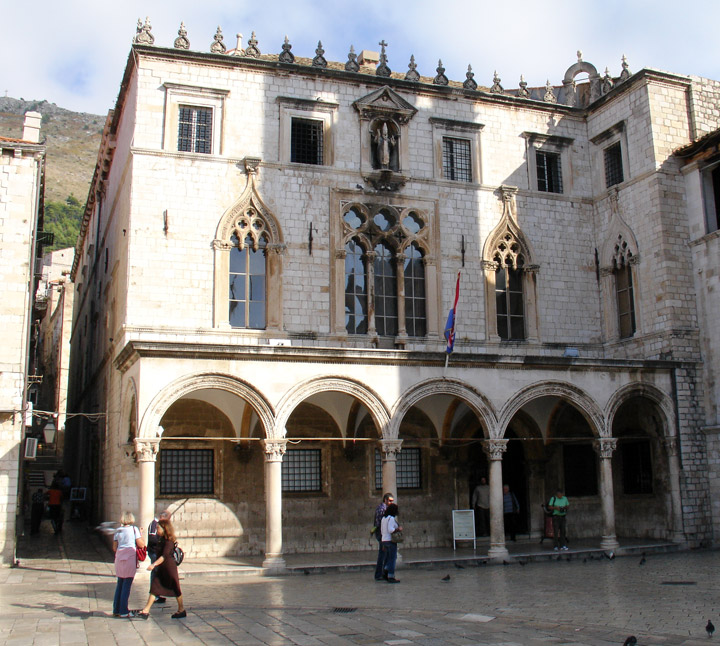
In 1861 was the meeting of the first Dalmatian Assembly, with representatives
from Ragusa. Representatives of Kotor came to Dubrovnik to join the struggle for
unification with Croatia. The citizens of Ragusa gave them a festive welcome,
flying Croatian flags from the ramparts, and exhibiting the slogan: Ragusa with
KotorŸ. The Kotorans elected a delegation to go to Vienna; Dubrovnik nominated
Niko Pucic. Niko Pucic went to Vienna to demand not only the unification of
Dalmatia with Croatia, but also the unification of all Croatian territories
under one common Assembly.

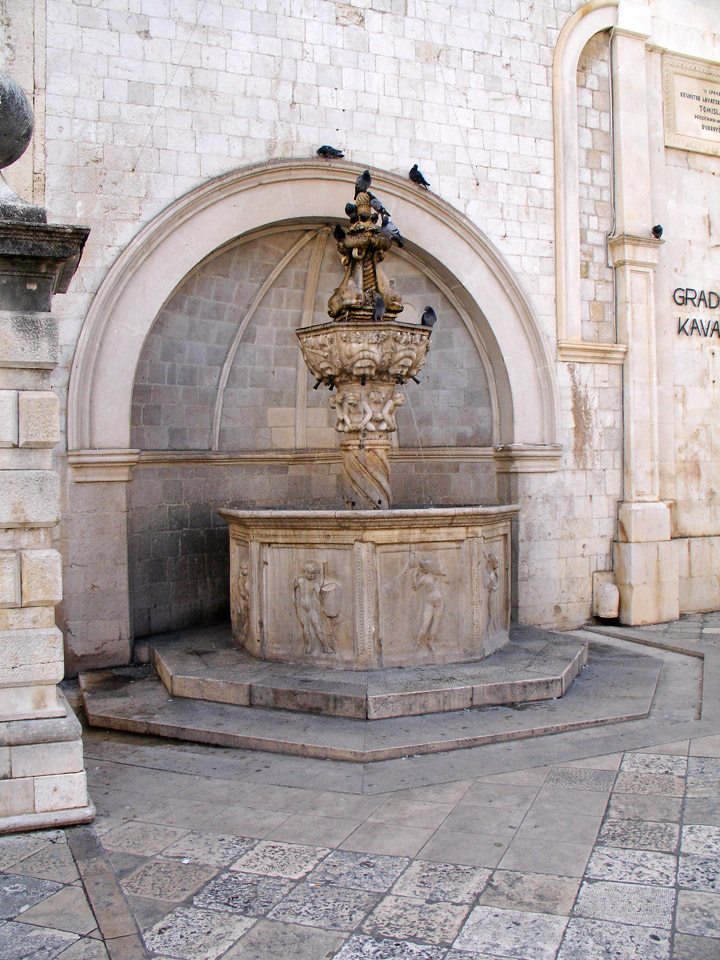
Onofrio's Little fountain
In 1883 was the death of politician Niko Pucic (born 1820). He was a member of the Croatian Assembly and champion of the unification of Dalmatia (particularly Ragusa) with Croatia. He was the editor of the review Ragusa and founder of the review Slovinac. In the same year died Ivan August Kaznacic (born 1817), publicist and promoter of the Illyrian cause. He edited the review Zora dalmatinska (Dalmatian Dawn) and founded the Dubrovnik review L'Avvenire.
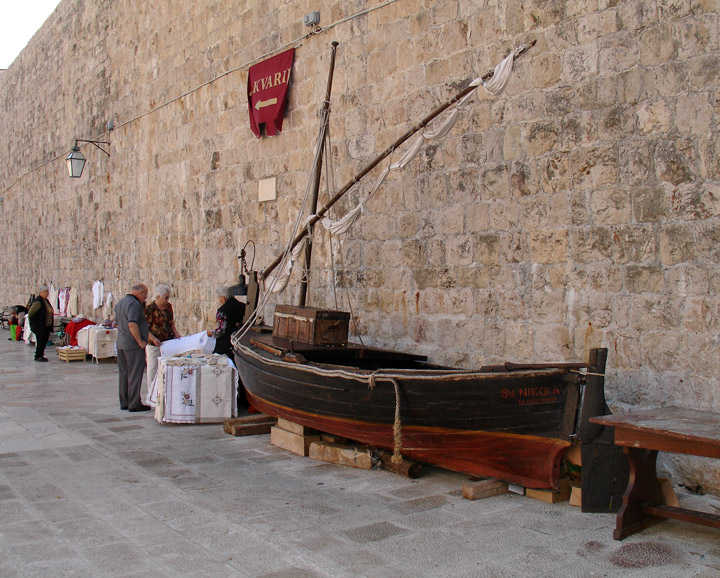
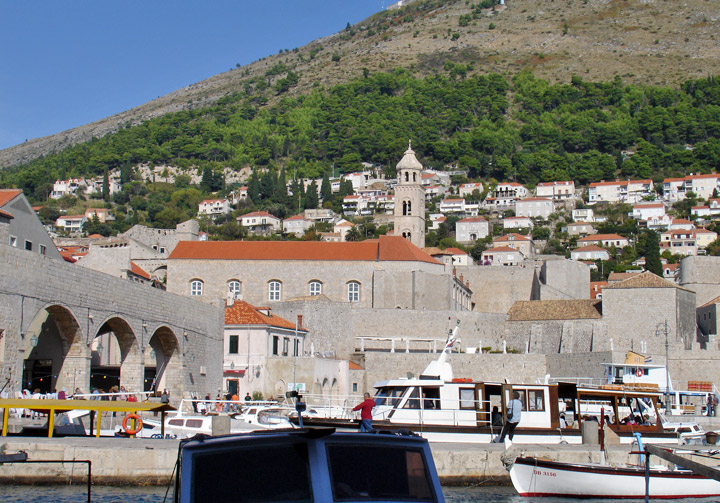
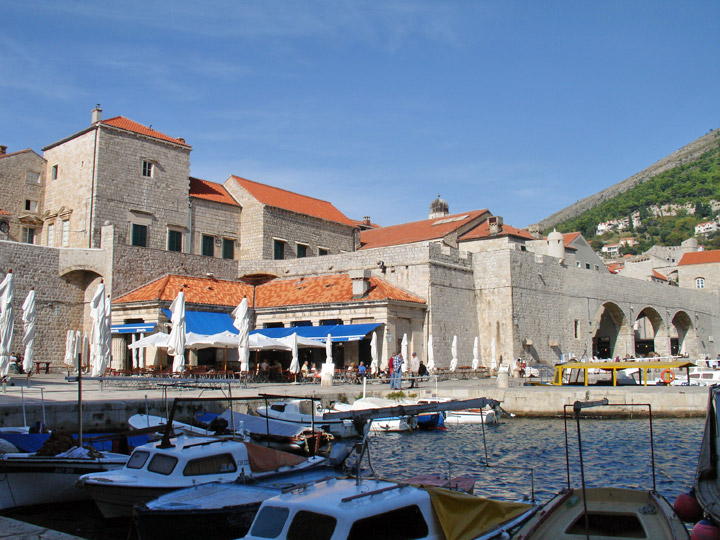
the harbor
In 1893, the minister of the city, the baron Francesco Ghetaldi-Gondola, opened the monument for Ivan Gundulic in Piazza Gundulic (Gondola).

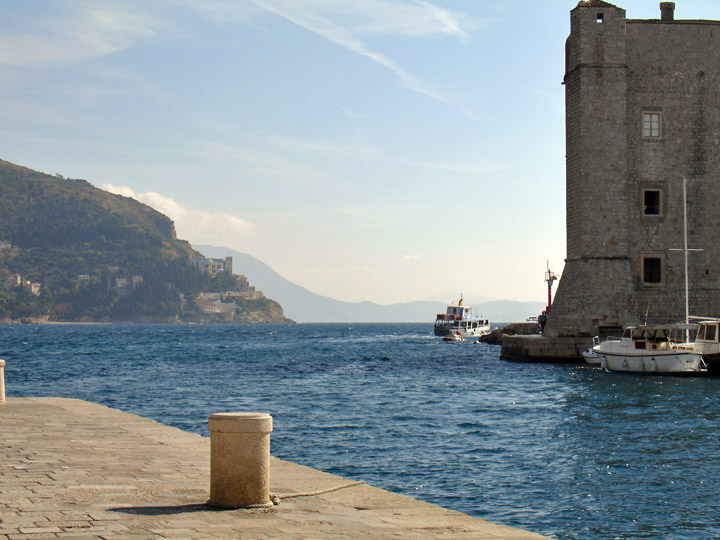
Although colloquially known to its residents as Dubrovnik for centuries, the
city's official name was Ragusa and was only changed to Dubrovnik only in 1918
with the fall of Austria-Hungary and the incorporation of the area into the
Kingdom of Serbs, Croats, and Slovenes, later the Kingdom of Yugoslavia.


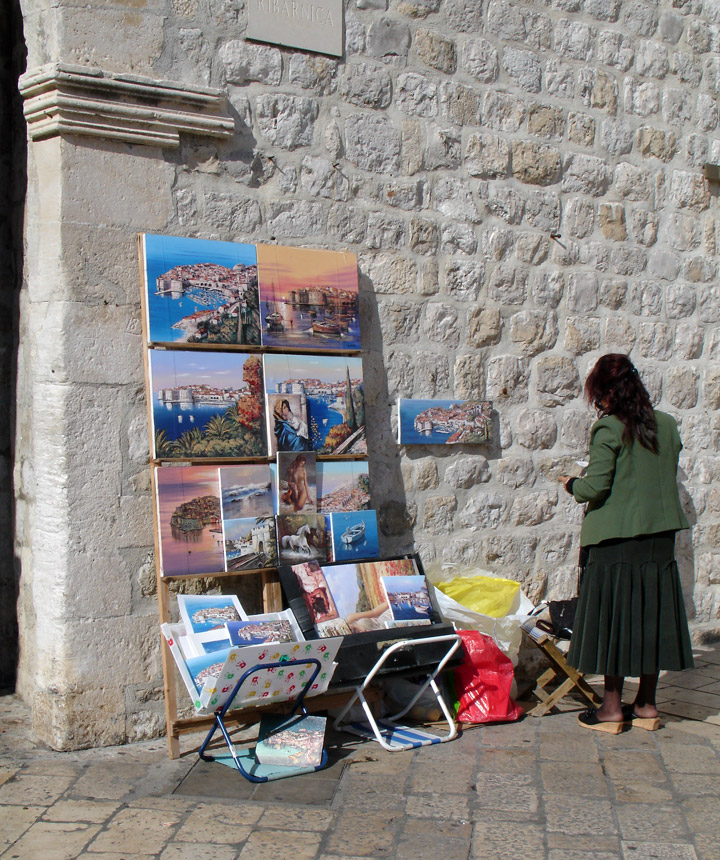
At the very beginning of the World War II, Dubrovnik was first part of the
Independent State of Croatia. From April 1941 until September 1943, Dubrovnik
was occupied by the Italian army and after that by the Germans. In October 1944,
the Partisans liberated Dubrovnik from the Germans and it became part of the
second Yugoslavia in 1945.

stairs to the Jesuit Church and School
Photos of the Jesuit Church and School
Despite the demilitarization of the old town by the Yugoslav People's Army in the 1970s in an attempt to prevent it from becoming a casualty of war, following Croatia's independence in 1991, the same army attacked and surrounded the city on October 1, 1991 and the siege lasted until May 1992. The heaviest artillery attack happened on December 6 with 19 people killed and 60 wounded. Total casualty in the conflict on this area according to the Croatian Red Cross were 114 killed civilians, among them the celebrated poet Milan Milisić (born 1941).
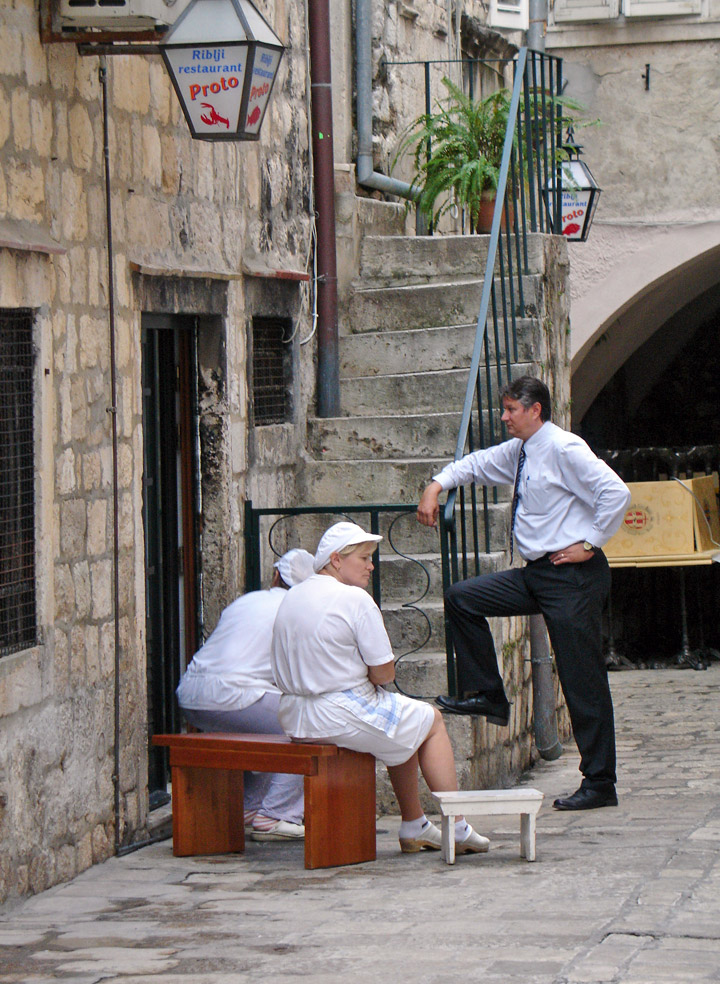
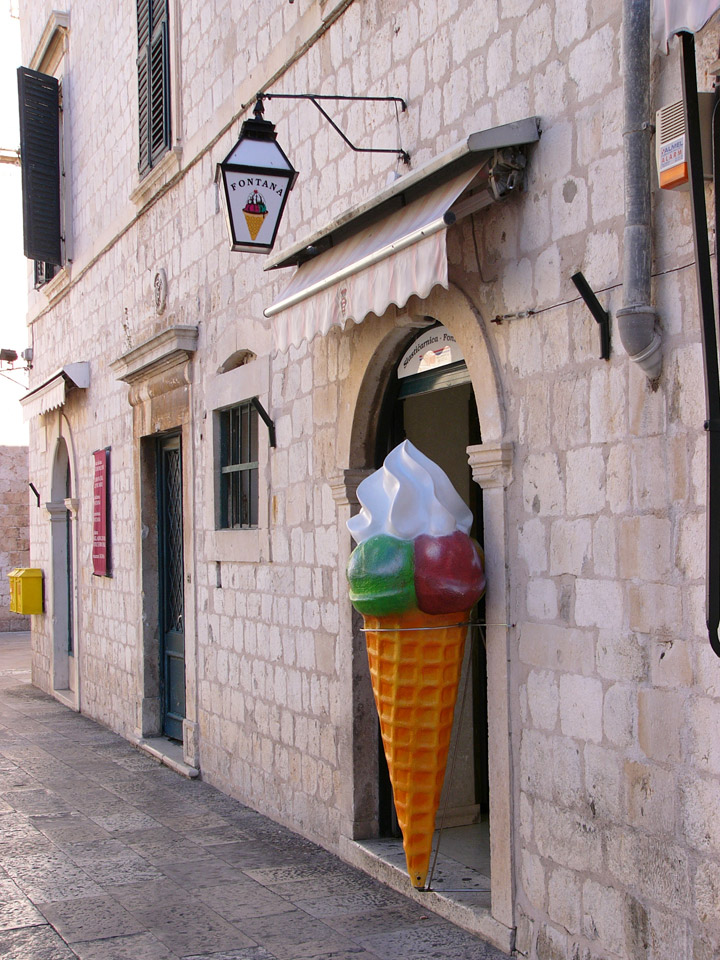
ice cream cones on the Stradun
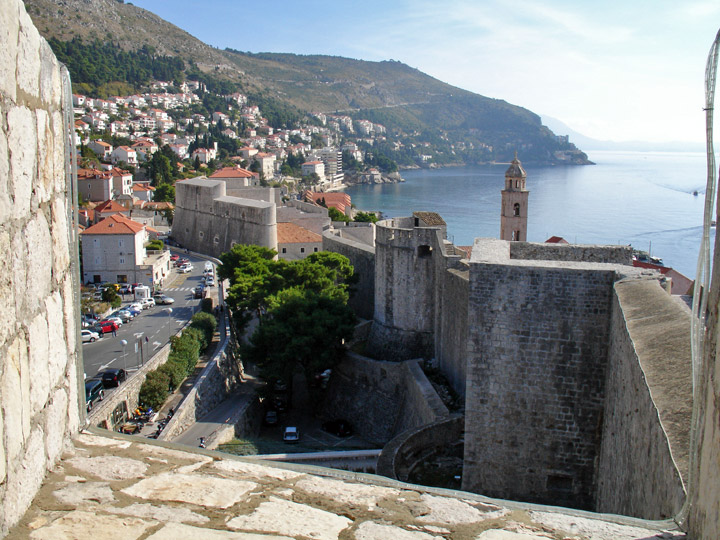
a portopn of the city walls
More Photos of the Dubrovnik city walls
Following the end of the war, a major rebuilding project led by the Croatian authorities and UNESCO began. They rebuilt the city in the ancient style to keep its sense of beauty and history. As well as rebuilding damaged buildings, surviving structures were strengthened against earthquakes. As of 2005, most damaged buildings in the city have been repaired.
Text from Microsoft Encarta
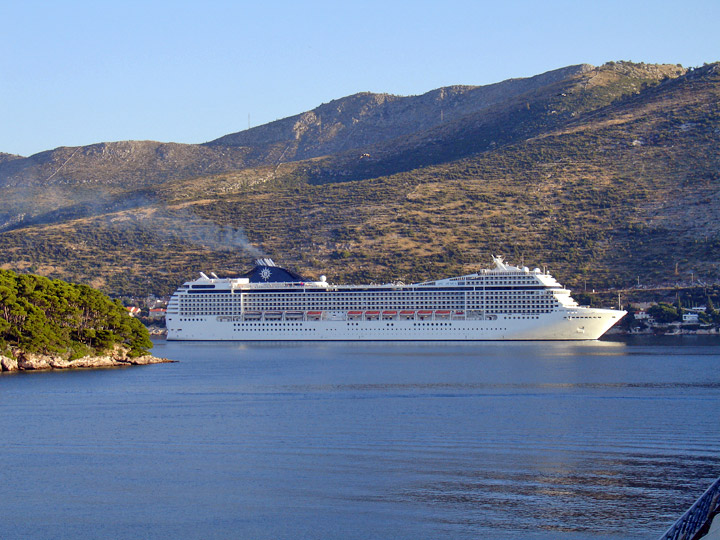
many of the visitors arrive by ship
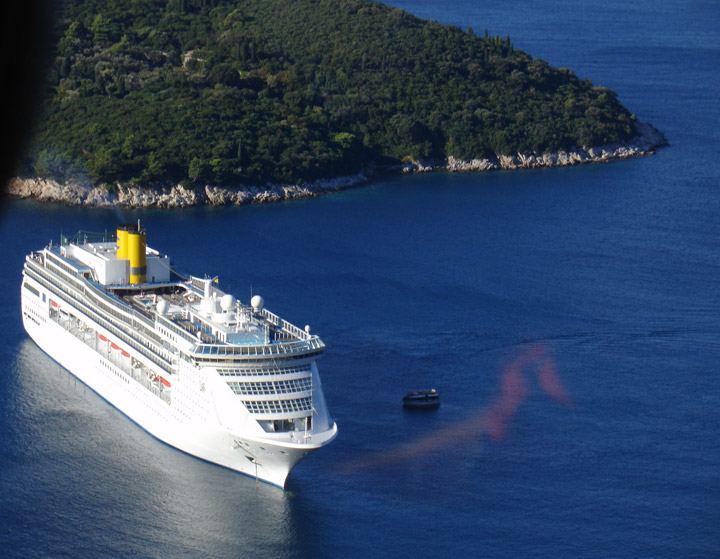
and leave the same day
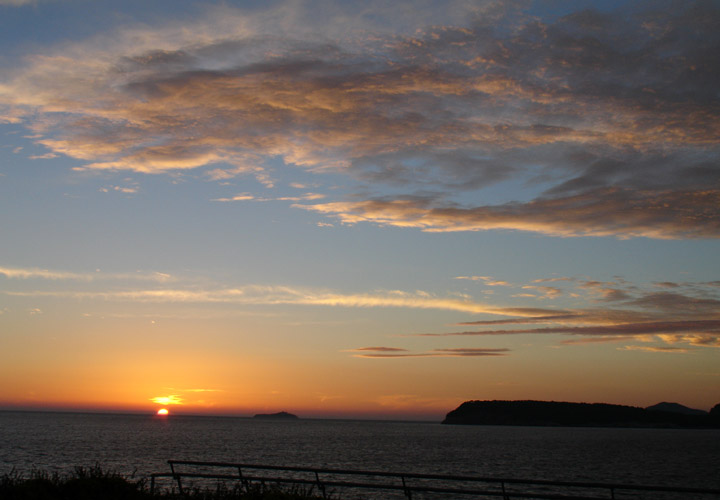
at sunset